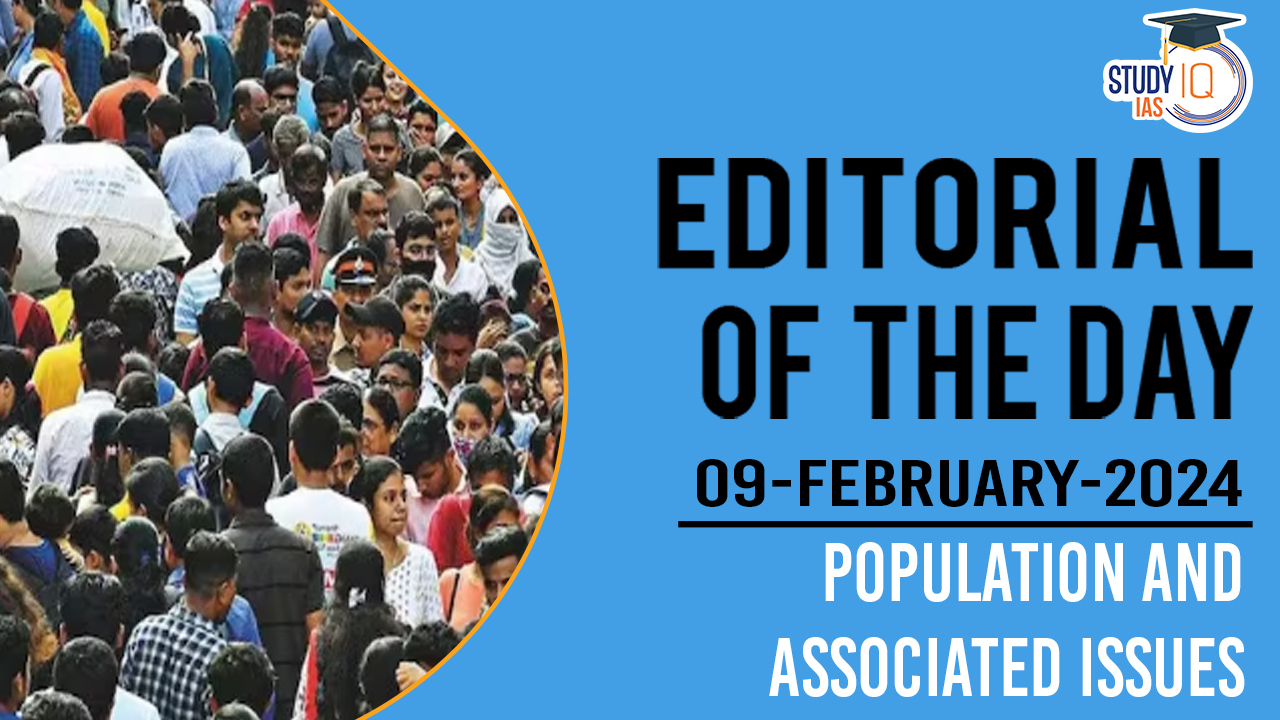Table of Contents
Context: In the recent interim budget a high-powered committee was announced to extensively consider the challenges arising from rapid population growth and demographic changes.
Demographic Transition of India
- Declining Birth Rates: There has been a significant decrease in the number of children per woman, contributing to slower population growth.
- Population growth rates have decelerated since the 1970s, following a period of rapid growth.
- Declining Fertility Levels: The Total Fertility Rate (TFR) has been consistently falling, a trend expected to continue, with projections showing the TFR decreasing to 1.73 by 2031-35 from 2.5 in 2009-11.
- Growing Working-age Population: India is undergoing a demographic transition characterised by a reducing proportion of children and an increasing proportion of working-age individuals.
- Increasing Elderly Population: The number of elderly people is rising steadily, indicating a shift towards an older demographic.
- Reduced Dependency Ratio: With fewer dependents per working adult, there has been a decrease in the dependency ratio, which is favourable for economic growth.
- Life expectancy: Projections for life expectancy in India also show positive trends, with female and male life expectancies expected to rise.
- Projected Population Growth: The United Nations projects India’s population to reach 1.46 billion by 2030, accounting for 17% of the global population.
We’re now on WhatsApp. Click to Join
Challenges In India’s Demographic Landscape
- Healthcare:
- Low public spending (1% of GDP)
- Limited access to quality healthcare, especially in rural areas
- Nutritional deprivation among children
- Hunger insecurity affecting physical and cognitive development
- Education:
- Nearly 47% of Indian youth are at risk of lacking necessary education and skills for employment by 2030, as per UNICEF.
- The pandemic forced over 250 million children out of school, severely affecting learning outcomes.
- Skill gap between education and industry needs
- Data:
- Lack of current, reliable data on population
- Hinders evidence-based policymaking
Suggestive Measures
- Increase Health Infrastructure Funding: Policies should focus on health promotion and allocate more finances to health infrastructure.
- Strengthen Primary Healthcare: Initiatives to improve primary healthcare, especially in rural areas, have shown positive results in child and maternal health and life expectancy.
- Nutrition Programs: Implement nutrition programs targeting vulnerable populations to address hunger insecurity and nutritional deprivation.
- Invest in Education and Skill Development: Increase investment in nutrition and early childhood education, including incorporating pre-primary education into the Right to Education Act.
- Modernise Data Infrastructure: Invest in updating data collection methodologies, adopting technology for data processing, and ensuring data security.
- Quality Assurance in Data: Implement rigorous validation mechanisms, including independent audits and peer reviews, to ensure data reliability and accuracy.
- Open Data Initiatives: Promote transparency in data sharing to make population data accessible for research and policy formulation.
- International Collaboration: Engage with global organisations for best practices, technical expertise, and funding in population data management.


 Protection of the Aravalli Range: Import...
Protection of the Aravalli Range: Import...
 Viksit Bharat Shiksha Adhishthan Bill 20...
Viksit Bharat Shiksha Adhishthan Bill 20...
 Jumping Genes: The Revolutionary Discove...
Jumping Genes: The Revolutionary Discove...

























